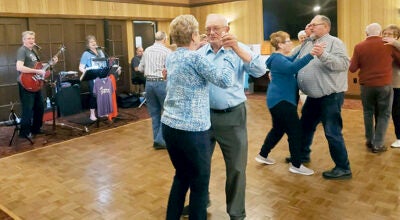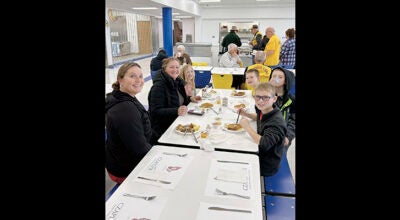Sisterhood survives
Published 2:49 pm Saturday, June 5, 2010
Breast cancer runs in the Hanson family.
Thanks to genetic testing, three sisters know that ovarian cancer does as well. So they decided to fight back.
Sisters Lorna Berg of Albert Lea, Anita Kes of Eagan and Linda Anderson of Rochester lost their mother, Florence, and aunt, Edna, to breast cancer just four months apart back in 1972.
But then the disease struck the next generation.
Linda was diagnosed with breast cancer in November of 1988 at the age of 37 and had a mastectomy, followed by chemotherapy and reconstructive surgery, and Anita followed suit in 1992 at age 36. She even took part in chemotherapy study.
“Doctors think I had it since my early to mid-20s,” Anita said. “They think our mother had it starting in her 40s.” Their mother was 66 when she was diagnosed.
Lorna had an unclear mammogram and some calcification, so she talked with Dr. Stephen Thorn at Albert Lea Medical Center about having a prophylactic mastectomy. It’s likely she would have breast cancer at some point in her life, doctors said.
However, Lorna’s husband’s insurance company refused to pay for the procedure, so she went onto her own employer’s plan and waited a year. Because her plan put an emphasis on wellness, insurance covered the procedure.
Based on family history, Linda underwent full-spectrum genetic testing in 2007. She learned that she did indeed have hereditary breast and ovarian cancer syndrome.
Hereditary breast and ovarian cancer syndrome is a genetic condition caused by a mutation in either of two genes called BRCA1 and BRCA2. Everyone has two copies of these genes; one is inherited from their mother and one from their father. When an individual carries an alteration in one of these genes, their changes of developing breast or ovarian cancer is significantly higher than average.
For example, women in the general population have a one in eight or 12 percent chance of developing breast cancer in their lifetime. Women who carry an altered BRCA1 or BRCA2 gene have an estimated 60 to 80 percent lifetime chance of developing breast cancer.
In regard to ovarian cancer, women in the general population have a 1 in 70 or 1.4 percent chance to develop ovarian cancer in their lifetime. Women who carry an altered BRCA1 gene have an estimated 20 to 54 percent lifetime risk and women who carry an altered BRCA2 gene have an estimated 18 to 27 percent lifetime risk.
Linda had the mutation in the BRCA2 gene. Since doctors knew what to look for, Anita only had to be tested for the specific gene. Lorna too got the test for the gene, although a nurse practitioner wanted her to see a genetic counselor. Both Anita and Lorna were positive for the gene mutation as well.
So the sisters made the decision to have their ovaries and fallopian tubes surgically removed. They scheduled their surgeries together on Dec. 16, 2008.
They made a slumber party out of the event and their daughters came with them. All three have one daughter each.
“We were quite a hit when we all three had the same surgery the same day,” Lorna recalled. “The operating teams and the pre-op teams who dealt with us were all smiling and got a kick out of it. We made it a fun experience. The doctor said she had had two sisters have the same surgery same day, but had never had three sisters.”
Their husbands were also behind them. “Our husbands were very supportive in wanting us to stay alive and healthy,” Lorna said.
Linda has a letter from a Mayo Clinic certified genetic counselor to give to family members to explain that their family has a history of hereditary breast and ovarian cancer syndrome. The letter urges family members to consider meeting with a genetic counselor.
Anita said her daughter complains about the family’s “crappy genes.”
“It bothers them a lot that the risk is out there,” Anita said of her daughter and her sisters’ daughters.
“At this point, we’re more concerned about our daughters,” Linda said.
Both Anita and Linda are comfortable talking about their breast cancer experiences.
After Linda’s surgery, she was active with the American Cancer Society’s Reach to Recovery program in Rochester for 10 years. She would visit with patients in the hospital who had just had mastectomy surgery and shared hope and encouragement, answering questions.
After Anita’s surgery, she participated for a time in a support group through the YMCA in the Twin Cities. She attended a group where their cousin, Kay, was the leader. Kay was trained as a nurse, and said she went into the field because of her two aunts. Both she and her sister are nurses.
The sisters want people to be aware of the connection between breast cancer and other cancers with the genetic gene mutations.
“We’re passing the word on,” Anita said.
“We have a male cousin who has two daughters and he was tested and was negative,” Linda said. “They were so relieved.”



